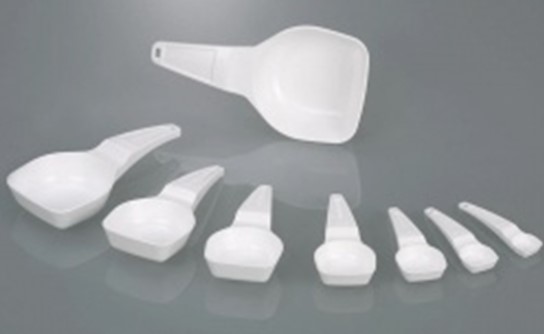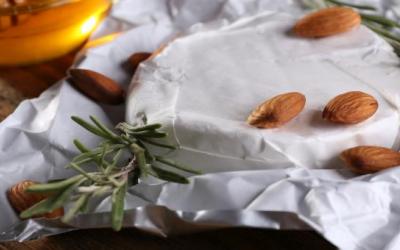Toxins produced by bacteria of the genus Clostridium lead to the rapid death of farm animals

Growth in the production of MILK and cattle MEAT is one of the main tasks facing the livestock industry today. This is necessary both to achieve the country's food security and to realize its EXPORT potential. But some factors hinder the achievement of high milk and meat productivity of cattle, as well as targets. Among them are herd diseases that lead to production and economic losses. A vivid example of this is clostridial infections: a complex of infectious diseases caused by spore-forming gram-positive bacteria from the genus Clostridium.
According to Natalya Bezborodova, Candidate of Veterinary Sciences, Senior Researcher at the Department of Genomic Research and Animal Breeding of the Ural Federal Agrarian Research Center of the Ural Branch of the Russian Academy of Sciences (UrFARC of the Ural Branch of the Russian Academy of Sciences), today science knows more than 200 species of bacteria belonging to this genus. The highest pathogenicity and toxigenicity are: C. perfringens, C. botulinum, C. haemolyticum, C. novyi, C. septicum, C. histolyticum, C. sordellii, C. chauvoei, C. tetani.
“The most dangerous clostridial diseases in cattle are emphysematous carbuncle, malignant edema, tetanus, botulism, anaerobic and hemorrhagic enterotoxemia of calves and necrotizing enteritis,” the scientist lists.
As a rule, all clostridial diseases are accompanied by severe intoxication, they are characterized by an acute/superacute course and sudden death of animals. But about 10 years ago, a chronic form of the disease was recorded. “Her clinical signs are partial paresis of the tail and hind limbs, non-healing wounds on the skin, constant thirst. According to our observations, chronic clostridiosis, against which an acute form of the disease develops, is present today in approximately 90% of livestock farms, ”says Alexander Brylin, Candidate of Veterinary Sciences, General DIRECTOR of Provet LLC.
The situation is complicated by the fact that clostridia are covered with a dense spore membrane that protects them from external factors. As a result, they perfectly tolerate sub-zero temperatures, exposure to chemicals and actively multiply at high humidity in an oxygen-free environment. Clostridia are ubiquitous in the environment. “These bacteria are found in water, soil, feed and compound feed, freshly cut grass, bedding, feces. And also saprophytic species of Clostridia are transmitted from mother to calf with milk,” says Alexander Brylin.
Injury factor
There is no need to demonize clostridia, because in most cases they are representatives of the normal microflora of the gastrointestinal tract, not only animals, but also humans. The disease develops only when the bacteria begin to produce toxins. But in what cases does this happen? “One of the reasons for the development of clostridiosis are wounds: they become a gateway for infection. Once in them, the spores turn into a vegetative form, multiply and begin to produce toxins,” says Alexander Brylin.
“Birth injuries, non-compliance with the rules for caring for the hooves of cattle, high injuries at enterprises and violations of veterinary and sanitary standards lead to the development of traumatic or wound infections in animals,” continues Natalia Bezborodova. “These include tetanus, emcar, malignant edema. Infections of traumatic origin are recorded infrequently, but are accompanied by high mortality and cause enormous economic damage.” Thus, much attention must be paid to veterinary and sanitary measures - hygiene of the herd and the treatment of wounds, as well as the disposal of the corpses of animals that have died from clostridial infections.
The reason for the development of alimentary, or fodder, clostridiosis are changes in the diet. In some cases, they cause the activation of bacteria and the production of toxins by them, the general director of Provet LLC warns. As a result, animals develop botulism and enterotoxemia. Among the risk factors are food changes, overeating, and an increase in the amount of protein entering the small intestine, where it becomes a nutrient substrate for Clostridia.
Another reason is the heavy soil contamination of feed. “When mowing fresh grass, the mower can pick up soil that has Clostridium spores. Another situation is when the tractor is moving downwind and small particles of earth containing spores fall on the grass when mowing. Thus, by eating “brilliant green”, animals receive an additional dose of bacteria, which can lead to the development of clostridium,” says the expert.
Prevention of clostridial infections lies primarily in adequate management of feeding, says Evgenia Shilova, DOCTOR of Veterinary Sciences, Leading Researcher at the Laboratory of Viral Animal Diseases of the Ural Research Center of the Ural Branch of the Russian Academy of Sciences. This is a complex work that involves the use of properly fermented feed with the appropriate fiber length, probiotics, maintaining a healthy microflora and preventing acidosis.
Mycotoxins all year round
However, not only stress contributes to a decrease in immunity and body resistance to clostridia. Mycotoxins, secondary metabolites produced by microscopic mold fungi, pose a great danger. Alexander Brylin recalls that they are found in almost all types of feed that form the basis of the diet of cattle: feed grain, silage, hay, compound feed.
For a long time there was an opinion that the rumen of a cow is able to neutralize any mycotoxins. But studies conducted in the 2000s showed that cattle are even more susceptible to certain groups of metabolites than pigs. And often the scar simply cannot cope with the amount of mycotoxins that enters it.
“Mycotoxicosis is a problem that is relevant throughout the year. But a certain seasonality is still characteristic of it: it is especially pronounced in winter and spring, when feed loses its freshness as a result of improper storage or harvesting, ”explains the expert.
Adsorbents are drugs that are added to feed to prevent mycotoxicosis. But they are truly effective only in the case of aflatoxins. If we are talking about fumonisin, zearalenone, ochratoxin, deoxynivalenol (DON), T-2 toxin and other non-polar mycotoxins, then organic and mineral adsorbents are not effective enough.
“At the International Forum on Mycotoxins, which took place in January 2020 in Bangkok, biotransformation was recognized as the only effective way to combat non-polar mycotoxins,” Alexander Brylin continues. – This method underlies the action of the Elitox mycotoxin eliminator. Due to the combined composition, the drug neutralizes and adsorbs all non-polar and polar mycotoxins. Moreover, this process begins already in the oral cavity, when the food is wetted by the saliva of the animal. In addition, the eliminator has a hepatoprotective effect and restores immunity , oppressed by mycotoxins.
The insidiousness of the virus
A factor that increases the likelihood of developing clostridium, but, according to Alexander Brylin, is almost never taken into account in practice, is viral diseases of cattle: infectious rhinotracheitis (IRT), viral diarrhea (VD), parainfluenza-3. Their pathogens are strong immunosuppressants, and vaccines are used to prevent disease. However, their choice should be treated with great care, the expert insists: “Even attenuated vaccine strains of RTI and VD viruses can cause immunosuppression. Against the background of chronic clostridium, mycotoxin intoxication, or other factors, attenuated live strains can trigger acute clostridial infections. In addition, it should be remembered that the causative agent of RTI refers to herpes viruses. Once in the bodytogether with a live vaccine, it penetrates the nerve ganglia and remains there forever, making the animal a lifelong carrier of the virus. In stressful situations, the herpes virus is activated and causes mild illness, often subtle, but with an increase in temperature. This serves as an immunosuppressive factor and leads to a decrease in milk production by 2–3 liters per day in cows for 5–7 days or a decrease in weight gain in calves.”
Thus, Alexander Brylin recommends the use of modern inactivated drugs. They do not cause immunosuppression, do not reduce the milk production of animals and do not lead to a decrease in weight gain. Moreover, they can be used on pregnant animals and calves from the age of two weeks.
“But there are difficult situations in which inactivated vaccines may not be able to do their job. In such cases, live vaccines should be used. How to avoid negative consequences? Quite recently, a fundamentally new vaccine for the prevention of RTIs has been created. The live virus it contains has had the gene responsible for penetrating the nerve ganglia removed. The antibodies that are produced as a result of the use of this vaccine completely destroy the herpes virus. The animal acquires immunity to it, but does not become a carrier,” our interlocutor explains.
Vaccine vaccine strife
Vaccination is one way to prevent and control clostridial infection. According to Evgenia Shilova, there is a wide range of preparations, which include bacterins, toxoids or a mixture of bacterins and toxoids. “It must be remembered that a single immunization with most drugs does not provide a high level of protection, and therefore should be accompanied by a booster dose, which should be given after 3-6 weeks. At the same time, vaccination of young animals does not provide an adequate protective effect until they are 1–2 months old. So most vaccination strategies target the pregnant cow so that colostral immunity is passed on to the newborn via colostrum,” she says.
At the same time, Evgenia Shilova reminds that the vaccination strategy should take into account the spectrum of pathogens circulating in the herd. But even following all the recommendations of scientists, you can get a negative result. “And after vaccination, in some herds there are intermittent problems associated with types or species of Clostridium not included in polyvalent vaccines,” our interlocutor warns.
According to Alexander Brylin, the modern program to combat clostridium is to develop a tense specific immunity in an animal. But since different types of clostridia are the causative agents of fundamentally different diseases, the best result is provided by the use of associated and polyvalent vaccines.
“As practice shows, animals do not tolerate vaccines based on killed bacterial cells. For several days, they may experience a depressed state, while milk yield may decrease by 2-4 liters per day. In addition, corpuscular vaccines lead to the production of antibodies to the bacteria themselves, and not to the toxins that are the main cause of clostridial infections. Accordingly, the immune response to toxins is also developed according to the residual principle, it cannot be standardized, ”explains our interlocutor.
For this reason, according to the requirements of the European Pharmacopoeia, vaccines against clostridium must necessarily contain purified inactivated toxins - toxoids - in certain concentrations. On the one hand, they are directed against the main pathogens of clostridial infections. On the other hand, they do not have side effects, without reducing the milk and meat productivity of animals.
Therapy: the sooner the better
But what if the animal is already sick? First of all, says Natalya Bezborodova, it should be isolated from the rest of the livestock, placed in a separate stall and created the most comfortable conditions for keeping. Fasting followed by a diet is prescribed in case of alimentary clostridiosis. In addition, it is necessary to give the animal astringents, sorbents and probiotics.
The theme is continued by Evgenia Shilova. “For tetanus and botulism, specific toxoids and antitoxic serums have been developed. In the early stages of malignant edema and emphysematous carbuncle, high doses of penicillin and tetracycline antibiotics or broad-spectrum antimicrobials can be used parenterally. In addition, it is recommended to use non-steroidal anti-inflammatory drugs. Topical treatment also includes a surgical incision in the skin and fascia for drainage. And with enterotoxemia, the leading role is played by the correction of electrolyte balance and detoxification therapy, ”she lists possible methods of treatment.
The effectiveness of therapy directly depends on how quickly measures were taken. “Treatment of clostridiosis can be ineffective, especially when a significant amount of exotoxins is released,” the scientist concludes.
Read together with it:
- Как дегустаторы "разбирают" вкус сыра и какие этапы проходит каждый образец, рассказала экспертЕкатерина Беспалова Заведующая отраслевой лабораторией биохимии, микробиологии и технологических процессов переработки молока Института мясо-молочной промышленности Республики Беларусь Представьте себе мир, где вкус - это профессия. Где каждый оттенок аромата имеет значение, а малейшее отклонение от нормы не остается без внимания. Сенсорный анализ - это не просто дегустация, а целая наука, изучающ...
- В 2025 году возрожденный молокозавод в Иванове наладил стабильный выпуск 13 новых видов продукцииЗа год на молокозаводе «РумелкоАгро – Молоко» в Иванове выпустили на рынок 13 видов продукции, в том числе шесть новых продуктов – два вида творога и четыре вида йогурта – за последний месяц. В среду, 22 октября, губернатор Станислав Воскресенский ознакомился с производством новых продуктов и обсудил с руководством предприятия планы по дальнейшему развитию переработки молока. «Завод, как мы и гово...





























































